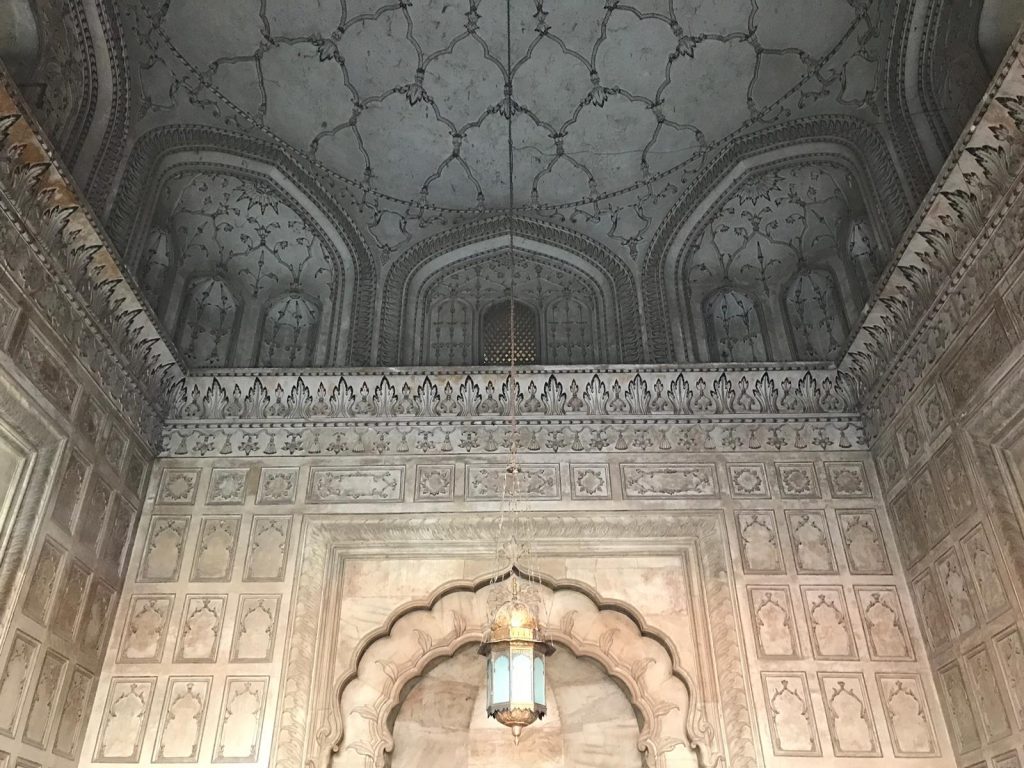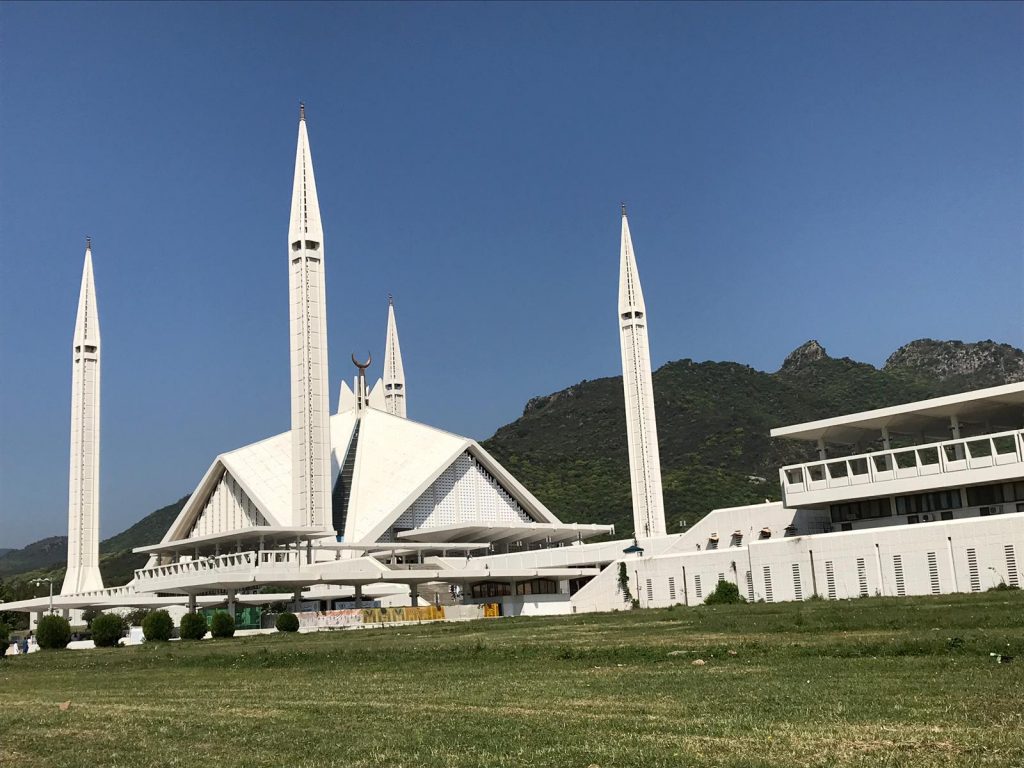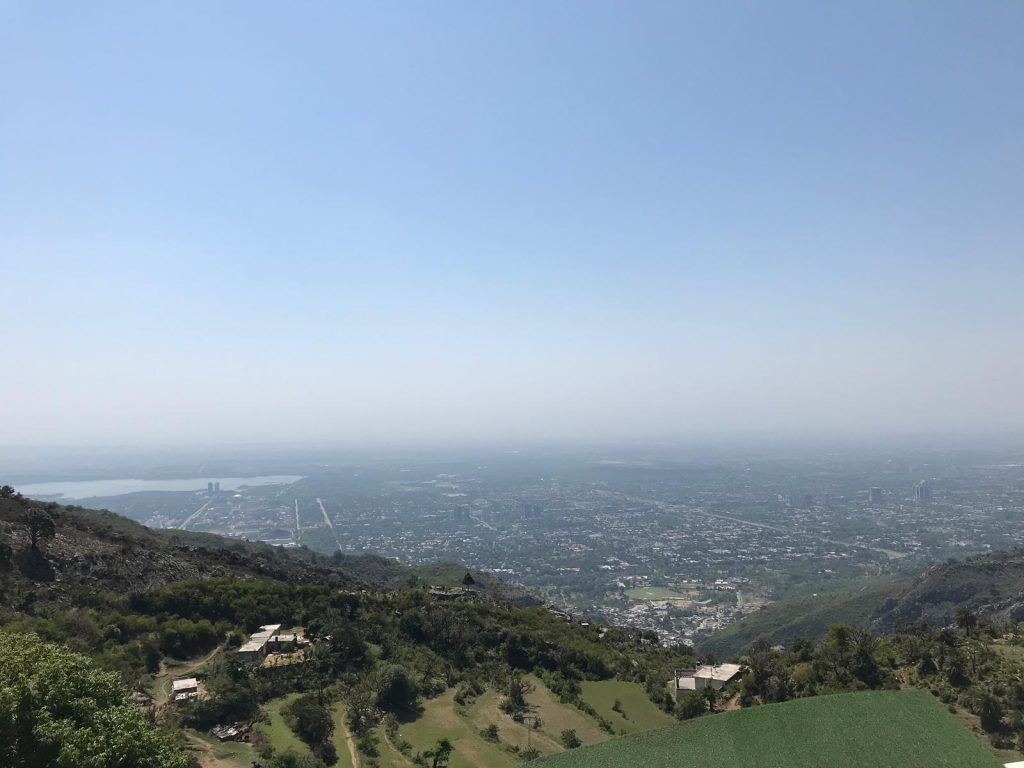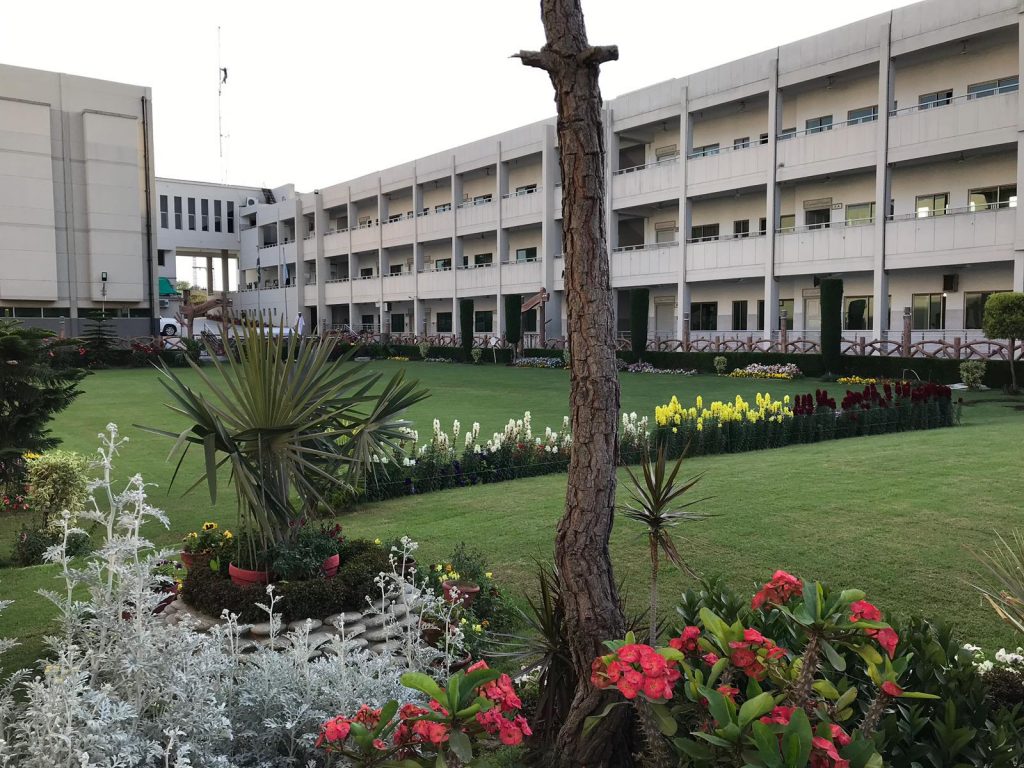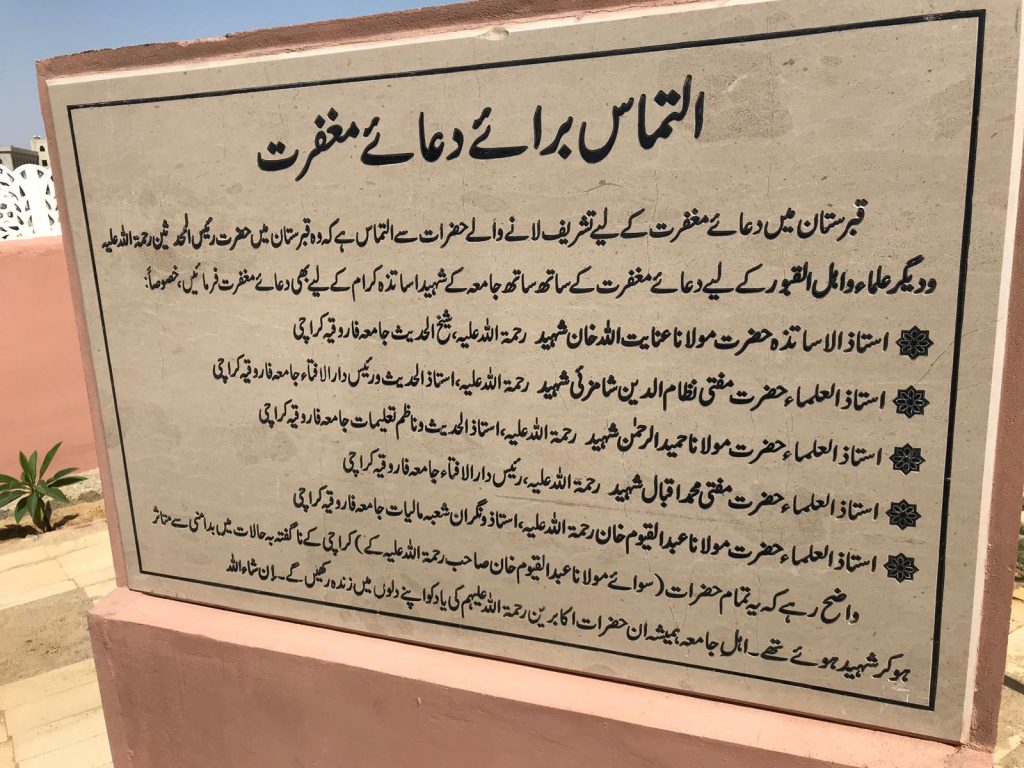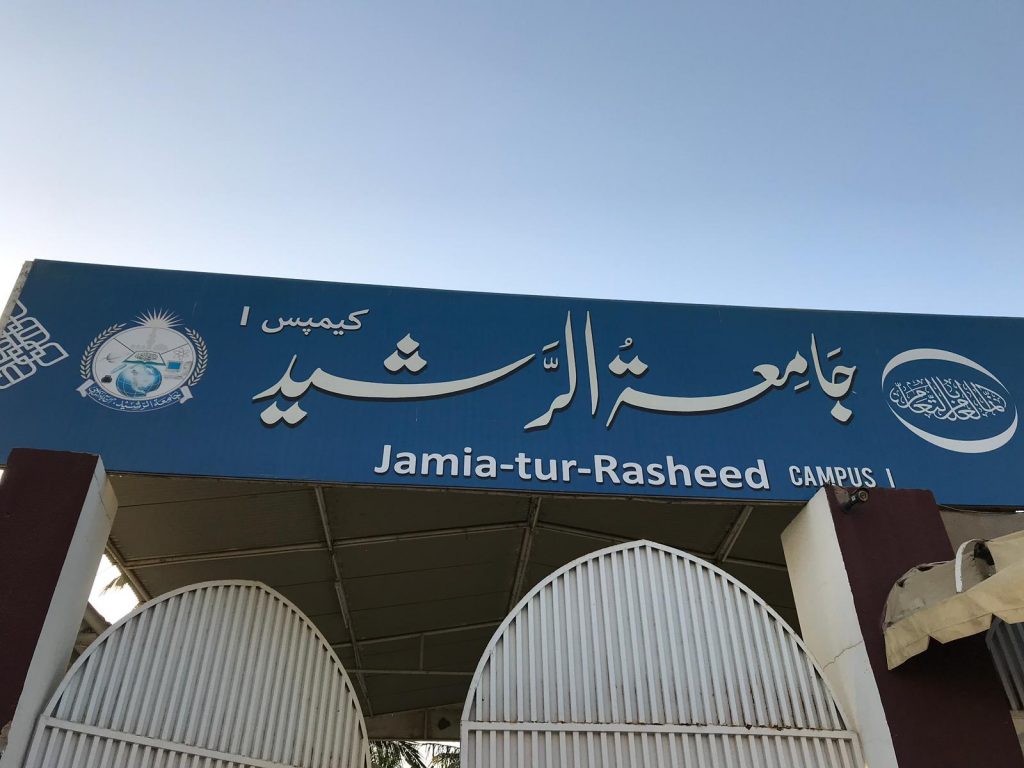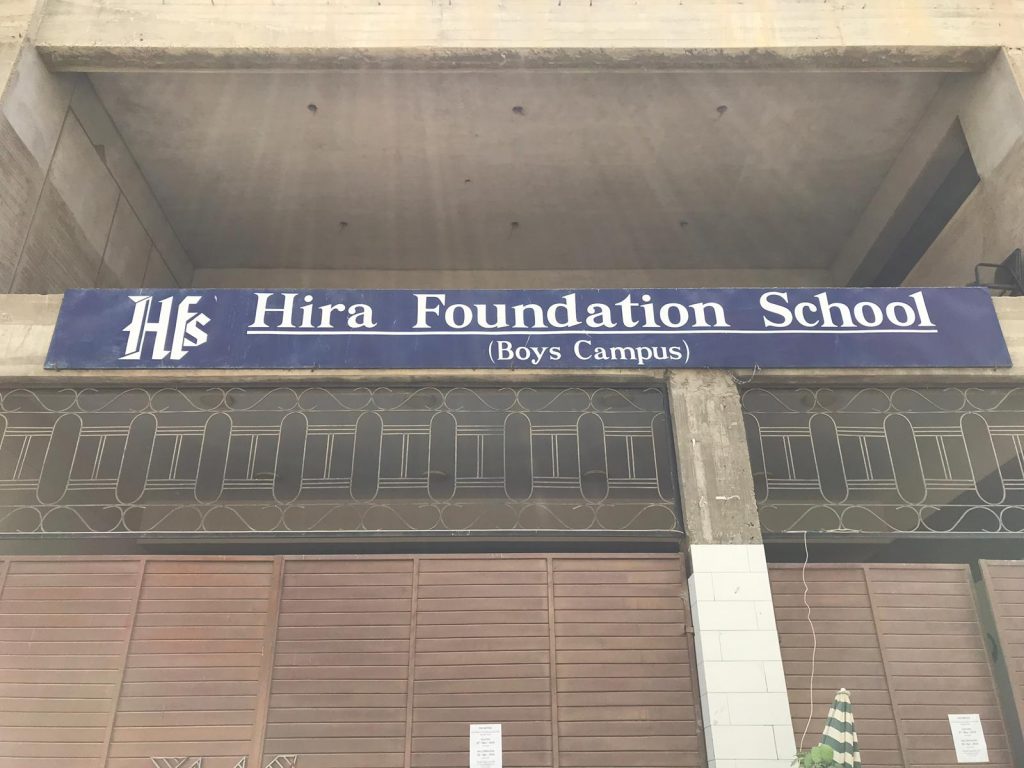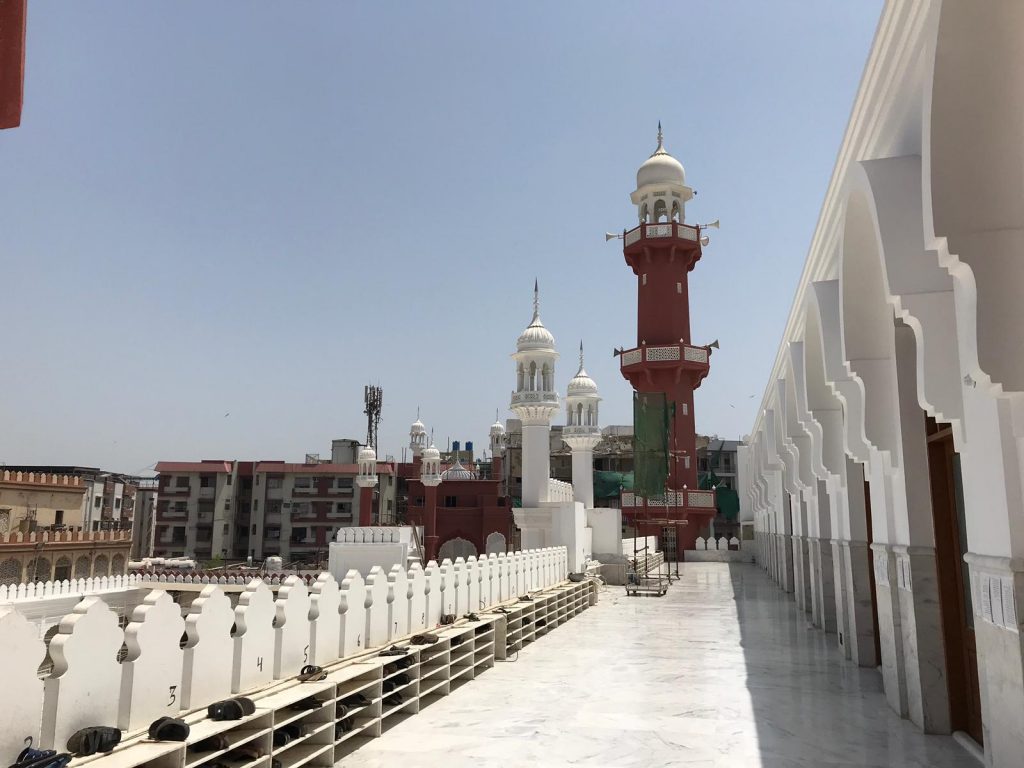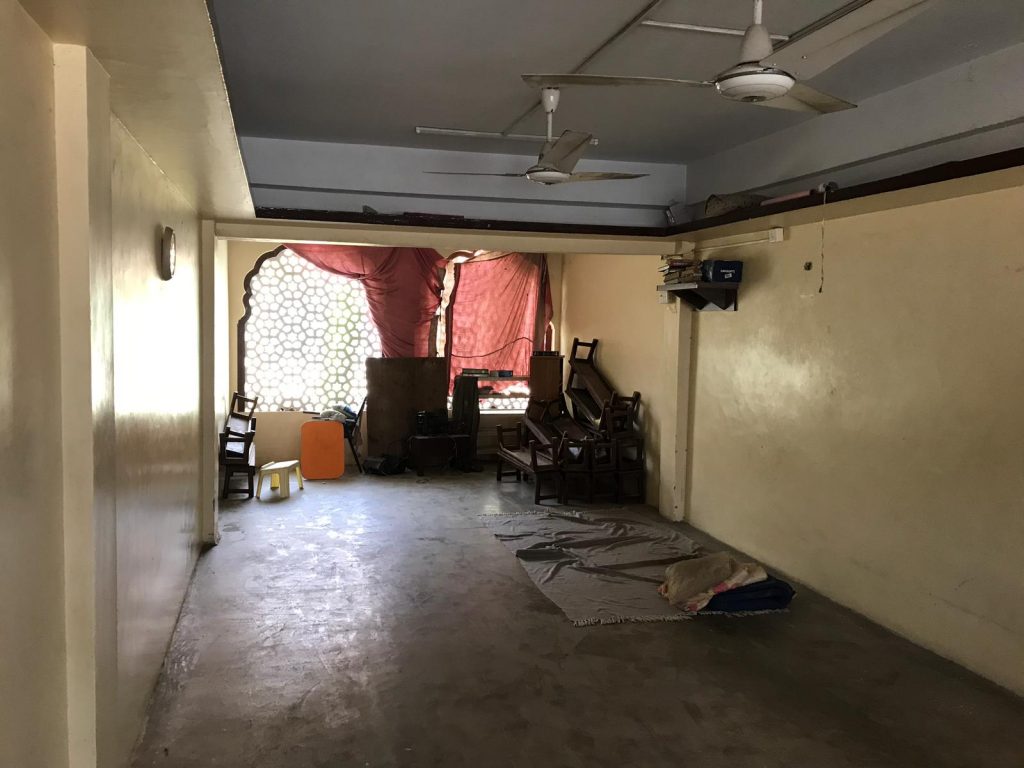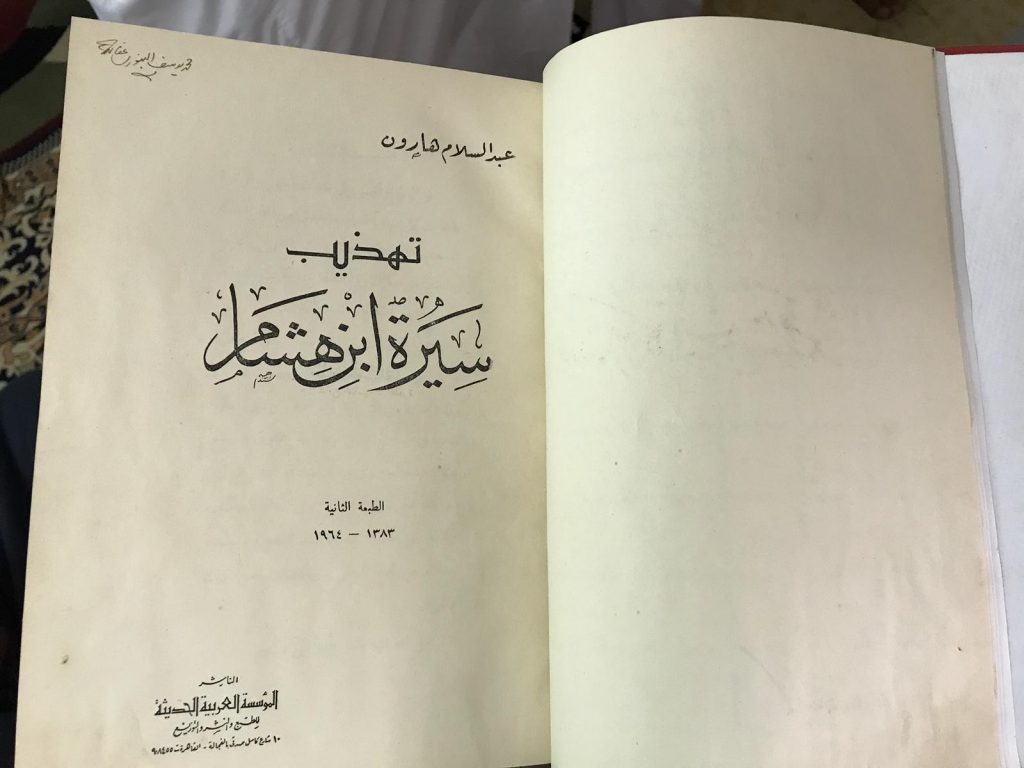Six days in Pakistan
In the name of Allah, the Compassionate the Merciful
Day 1 – Saturday 20 April 2019
From Uzbekistan to Pakistan
The Islamic Republic of Pakistan is the world’s sixth-most populous country with its population exceeding 200 million people, of which approximately 97% are Muslim. It had always been an ardent desire of mine to visit the country for a variety of reasons including to visit the seminaries and understand the religious and socio-economic condition of the people. However, given the regional volatility, this proved difficult over the years due to our origin. Through the grace of Allah Almighty, whilst touring Uzbekistan with our beloved Mufti Muhammad Taqi Usmani (b. 1362/1943), details of which have been shared in an earlier article, our visa for Pakistan came through. We decide to make use of this opportunity. This is my first journey to Pakistan.
We leave on the 9.55am Uzbekistan Airways flight from Tashkent to Lahore. There are currently two direct flights to Pakistan in a week, both to Lahore. Mufti Muhammad Taqi Usmani is also travelling on the same flight, he has an onward flight to Karachi. Also joining us on this flight is Shaykh Muhammad Ahmed of UWT (Ummah Welfare Trust) and my dear brother Mufti Muhammad Shabbir, both of whom joined us two days ago in Tashkent. The Pakistani Ambassador to Uzbekistan Dr. Irfan Yusuf Shami is also on the flight, he gives us an insight into Uzbekistan and highlights that Mufti Muhammad Taqi Usmani is a national, rather, international asset.
We arrive into Allama Iqbal International Airport, Lahore just after midday. The time zone is the same as Uzbekistan. Lahore International Airport was renamed after Allama Iqbal (d. 1357/1938), one of the pioneers who championed the cause of Pakistan and who is buried here in Lahore. Lahore is the capital of the Punjab province and the second most populous city after Karachi.
We are received at the Airport by Mawlānā Qari Shamsurrahman and Mawlānā Muhammad Idris, both of Oldham UK and Trustees of UWT, along with our dear friend Muhammad Ali from Karachi, and our visa sponsor.
Jamia Ashrafia Lahore
Our first stop is the famous seminary in Lahore, Jamia Ashrafia, which was established by Mufti Muhammad Hasan (d. 1380/1961) in 1947, a month after partition. He was a senior disciple of Mawlānā Ashraf ʿAlī Thānawī (d. 1362/1943) and named the seminary after him. Today, it serves 3000 students, making it the largest religious seminary in Punjab. The founder’s son and current Principal, Mawlānā Fazlurrahim, a charismatic elderly scholar welcomes us to the seminary and provides an overview of their work. He visits the UK regularly and is hosted by our teacher Mufti Ibrahim Raja (b. 1386/1966) in Blackburn. It is worth noting that Shaykh Idrīs Kāndhelwī (d. 1394/1974) and Shaykh Musā Rūḥānī Bāzī (d. 1419/1998) taught at this seminary and were its Shaykh al-Ḥadīth and Shaykh al-Tafsīr. Our respected Mufti Muhammad Taqi Usmani studied here for a very short period and Mawlānā Fazlurrahim was his class colleague.
We visit various areas of the seminary and observe the ongoing construction work. My respected father visited this seminary forty years ago whilst he was studying in Saharanpur, India, although much has changed since. At the time, it was easy for British Passport holders to cross into Pakistan. My respected father recalls that he would often make a day trip to Pakistan, and on one occasion he bought al-ʿIlal al-Mutanāhiyah, published for the first time, from Anarkali Bazaar for Shaykh al-Ḥadīth Mawlānā Muḥammad Yūnus Jownpūrī (d. 1438/2017).
Badshahi Masjid
Next, we visit the iconic Badshahi Masjid, which stands opposite the Lahore Fort.
Commissioned by the Mughal Emperor Aurangzeb in 1671, the Mosque construction was complete in 1673. It is symbolic of Mughal architecture with an exterior that is decorated with carved red sandstone with marble inlay. It is the largest mosque of the Mughal-era and is the second-largest mosque in Pakistan. After the fall of the Mughal Empire, it was used as a garrison by the Sikh Empire and the British Empire. There is a Sikh temple neighbouring the mosque complex and there are many Sikh pilgrims including from India.
We perform ʿAṣr Ṣalāh here after which a local Imam gives us a tour of the site. He describes the geometry of the structure and how the sound of the Adhan would reach the fort without any microphone. The structure is such that during earthquakes the building merely vibrates. What is remarkable is that there is no cement or metal in the structure and it was all built by hand.
At the entrance of the Masjid, there is a room accessible via a staircase which it is suggested contains the blessed hairs of our beloved Prophet ﷺ, along with other blessed relics. Allah knows best regarding their authenticity.
The Tomb of the famous poet Muhammad Iqbal (d. 1357/1938) also lies near the entrance of the Masjid.
Our time in Pakistan is limited, we therefore leave Lahore and head north to Islamabad. The journey takes five hours. The road infrastructure is good, there are three lane motorways. However, cleanliness and hygiene are a major problem in the country, similar to India. We arrive at our hotel in Islamabad late in the evening and rest for the night.
Yusuf Shabbir
Islamabad, Pakistan
Day 2 – Sunday 21 April 2019
From Islamabad to Swat
The morning begins with a quick tour of Islamabad. Islamabad is the capital of the country and was built in the 1960s to replace Karachi as the capital. The city is known for its greenery, natural terraces and meadows. It is rich in nature, surrounded by the Margalla Hills.
Shah Faisal Mosque, Islamabad
We visit the Shah Faisal Mosque which is located on the foothills of the Margalla Hills. Its construction was completed in 1986 and was financed by the Saudi King Faisal. The mosque features a contemporary design without a dome, consisting of eights sides of concrete shell, shaped like a Bedouin tent, surrounded by four 260 feet minarets. The sloping roofs forms a triangular worship hall which can accommodate 10,000 people.
The Turkish architect Vedat Dalokay was chosen to design the Masjid following a global competition. Explaining his unique design, he said, “I tried to capture the spirit, proportion and geometry of Kaaba in a purely abstract manner. Imagine the apex of each of the four minarets as a scaled explosion of four highest corners of Kaaba – thus an unseen Kaaba form is bounded by the minarets at the four corners in a proportion of height to base. Shah Faisal Mosque akin to Kaaba. Now, if you join the apex of each minaret to the base of the minaret diagonally opposite to it correspondingly, a four-sided pyramid shall be bound by these lines at the base side within that invisible cube. That lower level pyramid is treated as a solid body while four minarets with their apex complete the imaginary cube of Kaaba.” (Source: Pakistani Embassy in Tokyo)
The famous Islamic International University of Islamabad is located outside the mosque. This is the old campus. The new campus is located in sector H-10 of the city.
The tomb of General Muhammad Zia-ul-Haq (d. 1409/1988) is in front of the mosque. He ruled Pakistan for ten years, making him the longest-serving de facto head of state. He is widely accredited for Islamising the country and was known for his religiosity.
Daman-e-Koh
Our next stop is Daman-e-Koh, a viewing point and hill top garden located in the Margalla Hills. It is almost 500ft above the city of Islamabad and offers beautiful panoramic views over the city. From here, the Shah Faisal Mosque is a breath-taking sight along with the Rawal Lake.
There is a breakfast buffet at the Monal restaurant which is famous on the Daman-e-Koh, serving high quality affordable food, with an irresistible view of the city. Interestingly, it offers a 10% discount to customers who avoid waste and finish all the food they take on their plates. This has led to huge reduction in food waste. Restaurants across the world should adopt this scheme to tackle food waste.
Islamabad has many other tourist attractions including Fatimah Jinnah Park, Pakistan National Monument, Rawal Lake, LokVirsa Museum, Saidpur Village, Shakarparian, Islamabad Zoo, Rose & Jasmine Garden and Pir Sohawa. Our time is limited so we are unable to visit these places.
The Switzerland of Pakistan
Shortly after midday, we head towards Swat district in the Khyber Pakhtunkhwa province, formerly the North West Frontier province. Swat is known for its outstanding natural beauty. The journey takes several hours via the Mardan interchange and thereafter ascending into Swat valley. The route is very scenic through the mountains. There are regular army checkpoints.
As we arrive into Batkhella, we receive the news that Mawlānā Dr Adil Khan of Karachi, the son of Mawlānā Salimullah Khan (d. 1438/2017) is returning to Islamabad from a programme in Swat and is crossing Batkhella soon. Mawlānā Dr Adil is a very good friend of my respected father. He visited us in the UK and stayed with us on two occasions some fifteen to twenty years ago. Although I was young at the time, I have fond memories of him. We had lost contact with him as he had moved to Malaysia and only returned to Pakistan after the demise of his father two years ago. We meet with Mawlānā on the roadside, and his humour and personality have not changed. He insists we eat dinner with him in Mardan. He sits in our car and the convoy heads to Mardan. The hosts have prepared food for us in accordance with the Pashtun hospitality which is unrivalled.
After spending an interesting few hours with Mawlānā, it is time to part. Mawlānā leaves for Islamabad whilst we head to Ummah Children Academy, UWT’s flagship orphanage in Nowshera, which is an hour drive from Mardan. We rest here for the night.
Yusuf Shabbir
Nowshera, Pakistan
Day 3 – Monday 22 April 2019
Ummah Welfare Trust’s programmes in Pakistan
One of the main reasons for our journey to Pakistan is also to visit some of the projects of Ummah Welfare Trust (UWT) in the country. UWT is a UK based global NGO delivering a range of short, medium and long-term programmes in over twenty countries worldwide, with an annual budget exceeding 30 million pounds. It started its operations in the Afghanistan-Pakistan region some twenty years ago and has a strong presence here. Its headquarters in Nowshera is strategically located 100km from the border of Afghanistan.
Ummah Children Academy
When the conflict in Afghanistan began after 9/11 and refugees started to pour into Pakistan, the charity decided to build an orphanage to look after the orphans and provide them a secure environment. Subsequently, the earthquake in 2005 and other internal conflicts and calamities also resulted in many orphan children. The charity began the construction of the orphanage phase by phase. Today, the orphanage serves more than 700 orphans. Every child here is an orphan. The setup is impressive. The complex is very clean. The orphans are looked after very well. It is the charity’s flagship project and serves as the regional headquarters.
We meet with the Principal and Vice Principal and have a fruitful discussion regarding the curriculum and the general day to day operations of the orphanage. UWT Trustee Mawlānā Muhammad Idris is also present, he has overall responsibility and oversight of the orphanage as well as the charity’s other programmes in the region. His sacrifices are notable, his family is in the UK and he spends most of his time here. The Principal reports that the academic results of the students are among the very best. This is commendable considering the disadvantaged backgrounds of the students. Along with the national curriculum of Pakistan, there is a Ḥifẓ programme running concurrently and many orphans have completed their Ḥifẓ. Last year, the ʿĀlim programme also begun and the first year has just finished. This is a welcome development.
The charity is looking at ways in which the orphanage can become self-sustainable. To enable this, the charity has imported cows from Holland which produce much more milk than local cows. There are currently 280 cows. The milk from these cows are used to feed the orphans and the remainder sold with the proceeds used for the orphanage. This is a unique initiative.
There is also a large storage facility on site, supplies are dispatched from here for projects in Pakistan and Afghanistan.
In addition to this, the campus is home to the Ummah College of Technology which provides vocational training for local people.
Dialysis Centre
During the day, we visit a small dialysis centre managed by the charity in Bam Khel, Swabi district, an hour drive from Nowshera.
The centre provides an invaluable service at no cost. Fourteen patients attend daily. There are eight machines, with seven in operation and one on standby.
The local nurse explains that lack of clean water is a major contributor to kidney failure. There are currently eighty people on the waiting list, many on the waiting list die. The closest dialysis centre is in Peshawar, which is a two-hour journey by car. Most people cannot afford the treatment whilst others struggle with the travel costs. My respected father recommends to extend the opening times and also provide a tasbīḥ to all patients so that the patients remember Allah Almighty during the dialysis session.
Masjid Ahmed
Next, we visit Masjid Ahmed in the outskirts of Nowshera, built in memory and for the reward of my young cousin Ahmed Faruq Patel who passed away towards the end of 2014.
The Masjid can accommodate 250 worshippers and there is also a residential Madrasah within the Masjid. There are 300 pupils and nine teachers. Ahmed endured mental health problems throughout his life and passed away a teenager. This Masjid was financed by his family. May Allah Almighty reward and bless them and accept their contributions.
Masjid Maryam
We also visit Masjid Maryam located in Mohallah Janazgah, Mian Esa, Tehsil in the Nowshera district.
This Masjid was commissioned by my respected father as a Ṣadaqah Jāriyah project for the late female scholar Mariam Esmail of Canada who passed away on Friday 30 Ramaḍān 1436 (17 July 2015) after ʿIshāʾ Salah at the age of 40. The following is what I wrote at the time, “Marḥūmah is the daughter of Haji Ibrahim Bhai of Oshawa, Canada and was married to Mufti Husain Madni. In the 90s, her father sent her to the UK to become an ʿĀlimah at Jamiatul Imam Muhammad Zakariyya in Bradford. During these few years, her home during the holidays and otherwise was the house of her uncle Haji Ibrahim Randeri and then later the house of Mufti Shabbir Ahmed in Blackburn where she was a daughter and a sibling of the house. At all times, she exemplified good character and behaviour. Upon her return to Canada, she carried out the work of Dīn until her demise. She kept us updated and insisted we share the happiness of her son’s graduation as an ʿĀlim which took place a few weeks ago. The last we heard from her was the day she fell ill requesting us to make Duʿāʾs for her and her family. She leaves behind three children and many students. Her colleagues and students recall her humbleness and happy face at all times.” Following her demise, an appeal was initiated and more than £18,000 were raised within a few days by her students, family and associates. A water well was also built with these funds. May Allah Almighty reward all the donors and elevate her status in Paradise.
UWT has constructed more than 300 Masjids in Pakistan, this along with its other programmes reflect the breadth and depth of its operations in this region. May Allah Almighty bless its work further and reward all the supporters and well-wishers.
Jamia Darul Uloom Haqqania
Later in the day, we perform Maghrib Ṣalāh at the world renown Jamia Darul Uloom Haqqania, which is located a few KMs from Ummah Children Academy. It was established in 1947 by Mawlānā ʿAbd al-Ḥaq (d. 1409/1988), the father of Mawlānā Samīʿ al-Ḥaq (d. 1440/2018), who was assassinated a few months ago. The seminary is the largest in the province and serves thousands of students. There are also libraries outside the seminary which house some beneficial books. We also visit Mawlānā Samīʿ al-Ḥaq’s grave.
The car used by Mawlānā ʿAbd al-Ḥaq also remains within the compound of the seminary.
Yusuf Shabbir
Nowshera, Pakistan
Day 4 – Tuesday 23 April 2019
From Nowshera to Karachi
It is an early morning start as we head to Islamabad International Airport to board the 10am Serena Air flight to Karachi. The new state of the art airport was inaugurated a year ago. Mawlānā Zubair ibn Mufti Nazir has travelled this morning from his hometown Abbottabad to meet us at the Airport. He is a graduate of Darul Uloom Blackburn and is currently living in Pakistan to establish a Madrasah here. He invited us to visit his town, however, we were unable to visit it. It is his affection that he has undertaken a three-hour journey just to meet us for a few minutes. May Allah Almighty bless him and grant him tawfīq to successfully establish the seminary they are establishing.
We land in Karachi shortly after midday and the weather is extremely hot. We are received by Qari Shamsurrahman who arrived here last night from Nowshera. Karachi is the capital of Sindh province and the economic capital of the country. Located on the Arabian sea, it serves as the transport hub and is the most populous city in Pakistan. There are many tourist attractions in the city including the ports, the museums and parks. However, our primary purpose is to visit the seminaries and meet the scholars.
Jamia Farooqia (Phase 2)
Our first stop in the afternoon is the phase 2 complex of Jamia Farooqia which is under the supervision of Dr Mawlānā Adil Khan. Jamia Farooqia was established in 1967 by the late Mawlānā Salīmullāh Khan (d. 1438/2017), a student of Shaykh al-Islām Mawlānā Ḥusayn Aḥmad Madanī (d. 1377/1957) and a teacher of Mufti Muhammad Taqi Usmani (b. 1362/1943). The main campus is located in Shah Faisal Colony, 5km from the Airport and is home to several thousand students. Mawlānā Qari Shamsurrahman graduated from here. The second campus known as phase 2 is located on the Hub River Road close to the Baluchistan border. It takes us an hour from the Airport to reach here, as there is no traffic.
Mawlānā Anas, the talented son of Dr Mawlānā Adil Khan welcomes us, as his father travelled to Saudi Arabia earlier in the day. Construction work is ongoing on this 77-acre land. The Masjid block and the administration block are ready and 800 students are already enrolled here. The setup is impressive and the strategic plans are impressive. It is very clean and professional. Dr Mawlānā Adil Khan is a visionary and a strategist who plans to transform this campus into an international university. The syllabus is taught here completely in Arabic. In the next academic year after Ramaḍān, Dawrat al-Ḥadīth will commence here for the first time and it will be taught completely in Arabic, the first of its kind in Pakistan.
After touring the campus and visiting the graveyard where Mawlānā Salīmullāh Khan is buried, my respected father delivers a brief talk in the conference room emphasising on appreciating the bounties of Allah and making every effort to acquire knowledge. He adds that a Madrasah is not a Khanqah, it is a place of studying and learning, discussing and debating and quotes the famous statement of Imam Tirmidhī (d. 279/892) in his Sunan: ناظرت به محمد بن إسماعيل (I debated the matter with Imam Bukhārī – who was his teacher).
Jamia Binoria
Later in the afternoon, we head to Jamia Binoria, run by Mufti Muhammed Naeem. This is not to be confused with the famous Jamia Uloom-ul-Islamia in Binori Town, Karachi. Jamia Binoria has 5000 students in total, which includes 1000 foreign students and 1000 females. There are different pathways for local and foreign students and the Shafiʿī and Mālikī schools are also taught. It has seven branches in the city and plans to become a degree awarding institute. We meet with Mufti Muhammad Naeem and his son who gives us a quick tour of the institute.
Jamiatur Rasheed
Our next stop is Jamiatur Rasheed in Ahsanabad, established by the famous Mufti Rashīd Aḥmad Ludyānwī (d. 1422/2002), the author of Aḥsan al-Fatāwā. It is currently holiday season in Pakistan, so the current rector Mufti ʿAbdurraḥīm Ṣāḥib is not present. The institute has made significant progress over the past decade and has established collaborative partnerships with national and international universities along with a vibrant media wing, JTR Media House. The students are not charged fees. This is the norm in Madrasas in Pakistan and India. At Jamiatur Rasheed, students are also given a monthly stipend.
Jamiah Arabia Ahsan-Ul-Uloom
Next, we head to Jamiah Arabia Ahsan-Ul-Uloom in Gulshan Iqbal and meet with its founder Shaykh al-Ḥadīth Mufti Zar Wali Khan Ṣāḥib. The institute currently has over a thousand students. Mufti Ṣāḥib is well read and has good insight into books. He also possesses many manuscripts and has a very good memory. He praises Shaykh Muḥammad Yūnus Jownpūrī (d. 1438/2017) and Mufti Muẓaffar Ḥusayn (d. 1424/2003). He insists that the watch must be worn on the left hand, although I do not see any reason to insist upon this. The watch and for that matter a ring can be worn on the right or the left hand, both are established and Shafīʿī scholars have given preference to the right hand (see al-Majmūʿ, 4:462; Fatḥ al-Bārī, 10:372; al-Muṣannaf li Ibn Abī Shaybah, 6:65; Zād al-Maʿād, 1:139).
Jamia Uloom-ul-Islamia, Binori Town
Our final stop in the day is the famous seminary Jamia Uloom-ul-Islamia in Binori Town, established by Shaykh Muḥammad Yūsuf Binorī (d. 1397/1977) in 1954, the author of the partial commentary of Sunan al-Tirmidhī, Maʿārif al-Sunan. As we head towards the seminary, Qari Shamsurrahman highlights the location of the failed assassination attempt on Mufti Muhammad Taqi Usmani. We also pass the Baytul Mukarram mosque. As we approach the seminary, we pass by the place where Mufti Nizāmuddīn Shamzai (d. 1425/2004) was shot.
My respected father studied here in the third year of the Alim programme for six months from December 1976 to mid-summer 1977. He participated in the lessons of Shaykh Muḥammad Yūsuf Binorī. He studied Kanz al-Daqāʾiq with Mawlānā Ḥabibullāh Mukhtār (d. 1418/1997), the author of Kashf al-Niqāb. During the six months, my respected father did not visit any other place in Karachi. Forty-two years on, this is the first time he has returned to Karachi. Between 1978 and 1980, he visited Lahore on several occasions, however, since then this is his first visit to Pakistan.
We have a quick tour of the seminary but decide to return tomorrow or Thursday, as it is late in the evening and the senior teachers are not present.
We pay our respects to Shaykh Muḥammad Yūsuf Binorī, his son Mawlānā Muḥammad Binorī (d. 1419/1998), Mufti Aḥmad al-Raḥmān (d. 1411/1991) and Mawlānā Ḥabibullāh Mukhtār whose graves lie within the Madrasah complex.
We rest at the house of our dear Muhammad Ali who has accompanied us throughout this journey.
Yusuf Shabbir
Karachi, Pakistan
Day 5 – Wednesday 24 April 2019
Darul Uloom Karachi
Today is the day I had been waiting for many years. Darul Uloom Karachi is renown all over the world. It was established by the late Mufti Muḥammad Shafīʿ ʿUthmānī (d. 1396/1976) in 1951, and in 1957 moved to this current site in Korangi. At the time, Korangi was outside of Karachi.
As we enter the gates of the Darul Uloom, it is clear that it is not simply a Darul Uloom, the 56-acre land is an entire village with a range of amenities and facilities. It is very clean, organised and professional. The atmosphere is very positive. The streets and the buildings are named after the companions or our elders from the subcontinent. There is, understandably, heavy security presence.
We meet with our respected Mufti Muhammad Taqi Usmani at midday in his office, where he is reading through the ongoing work on the ḥadīth encyclopaedia, the Mudawwanah. Mufti Ṣāḥib warmly welcomes us and mentions that it was his desire to have hosted us throughout our stay in Karachi. This is Mufti Ṣāḥib’s generosity and affection. Our hosts in Karachi had insisted we stay with them. My respected father mentions to Mufti Ṣāḥib that he has returned to Karachi after 42 years and that this is his first time at Darul Uloom. Whilst studying in Binori Town, he did not visit anywhere else although he saw Mufti Ṣāḥib in Binori Town once.
Mufti Ṣāḥib provides us an overview of the Darul Uloom. There are currently 5000 students. My respected father comments that Mufti Muḥammad Shafīʿ would not have even thought that the Darul Uloom would develop into what it is today. Mufti Ṣāḥib concurs and adds that this is all grace of Allah Almighty. Mufti Ṣāḥib highlights that the Darul Uloom has no safīr (representative to collect donations) and it was his father’s policy to only do whatever was within the means, based on however much funds he possessed. He mentions that Darul Uloom has not used a single penny from banks or financial institutions in its growth, contrary to what some people assume. Rather, it is the grace of Allah Almighty and the generous and sincere donations of Muslims that has taken Darul Uloom to where it is today. Darul Uloom has graduates all over the world including in Uzbekistan which we visited a few days ago. Mufti Ṣāḥib mentions that Darul Uloom has always adopted a flexible approach for the admission of foreign students, even if they did not meet the academic requirements. This is because many foreign students came from countries like Uzbekistan and Tajikistan, countries in urgent need of Islamic education. Today, former students like Shaykh Rahmatullah in Uzbekistan are playing a major role in reviving Islam. My respected father concurs, adding that seminaries in the UK should adopt a similar flexible approach for foreign students.
Mufti Ṣāḥib requests his academic secretary Mawlānā Shakir Jakhura, originally from South Africa, to give us a quick tour of Darul Uloom. We begin with a tour of the library which has 100,000 books.
We are fortunate to see some of the manuscripts written by Mawlānā Ashraf ʿAlī Thānawī (d. 1362/1943) and Mawlānā Zafar Ahmed Usmani.
We are also shown the car that that was shot at during the assassination attempt on Mufti Ṣāḥib a few weeks ago, this is the other car that was travelling with Mufti Sāḥib’s car.
We also visit the Darul Ifta block which has a professional layout and outlook, and view some of the historical fatwa records. A plaque outside records the number of Fatwas written by the respected Muftis of the Darul Uloom since inception until recently. Today, this Darul Ifta is regarded an authority globally particularly by the ḥanafīs. We meet with Mufti Abdul Mannan, one of the senior Muftis here.
Other blocks we visit in the complex include the Darul Hadith block, where the seating is theatre style, and each student has a microphone.
After performing Ẓuhr Ṣalāh in the Darul Uloom Masjid, where I note that congregational duʿāʾ does not take place after Ṣalāh, we eat lunch at Mufti Ṣāḥib’s house. Despite his status, Mufti Ṣāḥib is a very simple person. He travels alone or with his family and does not prefer to be accompanied by a large group of students or murīds (spiritual pupils). At home, he is alone with us and we have lunch together. Later, we meet his grandson, Mohammed Abdullah Usmani, who was with us in Uzbekistan. Earlier in the day, Mufti Ṣāḥib ate breakfast with some students in the canteen of the Darul Uloom. Someone had taken Mufti Ṣāḥib’s photograph without his knowledge and made it viral. Mufti Ṣāḥib expresses his dissatisfaction. Herein lies an important point: express or implicit permission is necessary before taking any photographs, and the permissibility of digital photography according to Mufti Ṣāḥib does not provide unrestricted permissibility to take photographs without consent.
We take leave from Mufti Ṣāḥib and head to the residence of Mawlānā Azizurrahman Ṣāḥib within the complex of Darul Uloom. Mawlānā currently teaches Sunan Abi Dāwūd and the first volume of Sunan al-Tirmidhī here. Originally from Swat, he is married to the granddaughter of Mufti Muḥammad Shafīʿ Ṣāḥib, the sister of Mawlānā Rashīd Aḥmad Sayfī (the compiler of Dars Tirmidhī, who recently passed away) and the daughter of Mawlānā Nūr Ashraf Ṣāḥib. His mother in law, Atiqah Khatun, the elder sister of Mufti Muhammad Taqi Usmani, is approximately 99 years old. She was a murīdah (spiritual pupil) of Mawlānā Ashraf ʿAlī Thānawī. She is alive and lives elsewhere in Karachi with her son. This is remarkable because as far as I am aware there is no student or murid of Mawlānā Thanawī who is alive today. Mawlānā Azizurrahman is very humble and has a good sense of humour. His son Mawlānā Muhammad Adnan Aziz is involved in the Darul Ifta of Darul Uloom and has been sourcing books for us since the past few years.
We visit a bookshop within the complex. There are several bookshops here. We also visit the graveyard where Mufti Muḥammad Shafīʿ Sahib and other luminaries are buried. The graveyard where our dear brother Junaid Jamshed (d. 1438/2016) is buried is also within this complex.
Hira Foundation School
During the day, we also visit the Hira Foundation School within the Darul Uloom complex.
The Hira Foundation School provides a unique blend of modern and traditional disciplines and is among the top schools in the city offering the Cambridge curriculum as well as the Ḥifẓ of the Quran and Arabic language studies. The fees are low compared to similar schools in the city. Primary and secondary education is provided and there are separate wings for boys and girls. The master plan on display is ambitious and includes offering degree level courses.
We meet with the current head of the institute, Dr Mawlānā Imran Ashraf Usmani who shares with us his vision and some of the recent developments. They include the launch of the Hira Institute of Emerging Sciences (HIES) that aims to bridge the gap between religious scholars and the worldly sciences. Its mission is “To produce, without any discrimination, highly motivated and well-informed Islamic scholars, armed with modern education for the proper guidance of the whole Muslim Ummah.” This is commendable and Dr Imran informs us that many hundreds of students from Darul Uloom are benefiting from the Institute’s provision across a range of disciplines. The courses on offer include: Diploma in Business Management, Diploma in IT, Digital Marketing, Artificial Intelligence, courses in the English language and much more.
The Hira Foundation reflects the dream of Mufti Muḥammad Shafīʿ Ṣāḥib to have an integrated national education system until a certain age after which students can choose a pathway in religious sciences or the worldly sciences, as outlined in my article entitled: Is the parallel education system contributing to the decline of the Muslim ummah?
There is a visible divide in Pakistan between religious scholars and other professionals. Hira Foundation’s work bridges this gap by providing a high-quality world-class education underpinned with Islamic values to the future leaders and professionals of the country whilst also upskilling the future religious scholars with the necessary leadership and developmental skills. The country requires both religious scholars and experts in all the various sciences to work collaboratively and appreciate each other’s work as complimenting each other. The work of the Hira Foundation and similar institutes has started to achieve this which is commendable.
Khanqah Imdadiyyah Ashrafiyyah
We leave Darul Uloom Karachi and head to Khanqah Imdadiyyah Ashrafiyyah of Ḥakīm Akhtar Ṣāḥib (d. 1434/2013) in Gulshan Iqbal. This is currently being directed by Ḥakīm Ṣāḥib’s son, Hakīm Maẓhar Ṣāḥib. Hakim Akhtar Ṣāḥib has many disciples in the UK and South Africa. His unique features include support for all charitable causes as reflected in the work of his charitable trust, the Akhtar Trust, which has been wrongfully accused of supporting terrorism.
The final spiritual pupil of Mawlānā Ashraf ʿAlī Thānawī
As my mother is with us, she desires to meet the elder sister of Mufti Muhammad Taqi Usmani who is approximately 99 years old, mentioned above. She lives with her son Mawlānā Fahim Ashraf Nur in another area of Karachi. Mawlānā Fahim, the younger brother of Mawlānā Rashid Ahmed Sayfi, manages the publishing house Idaratul Quran, which has published many beneficial books over the years including al-Muḥīṭ al-Burhānī in twenty-five volumes, Sharḥ al-Ziyādat in six volumes, and many other books.
Mawlānā Fahim Ṣāḥib welcomes us into his home, shows us some manuscripts and informs us that they are working on publishing Ṭawāliʿ al-Anwār based on three manuscripts. He further explains in relation to his mother Atiqah Khatun that her father Mufti Muḥammad Shafīʿ Ṣāḥib instructed her twice to become a spiritual pupil of Mawlānā Ashraf ʿAlī Thānawī, so she did so at the house of one of the wives of Mawlānā Thānawī. My respected father comments that she is probably the last person alive to have seen Mawlānā Ashraf ʿAlī Thānawī and that if she had taken ijāzah of ḥadīth from him, this would have been significant. She informs my mother that as a young girl she recalls her eyes opening at night upon hearing the recitation of her father Mufti Muḥammad Shafīʿ Ṣāḥib in Tahajjud Ṣalāh, he was not a ḥāfiẓ of the Quran, but had memorised the final three Juz.
Our final stop today is the residence of our beloved Qari Shamsurrahman who has remained with us since our arrival to Pakistan, the visit would be incomplete without a meal at his residence.
Yusuf Shabbir
Karachi, Pakistan
Day 6 – Thursday 25 April 2019
Final day in Pakistan
Jamia Uloom-ul-Islamia, Binori Town
Today is our final day in Pakistan. We begin by visiting Jamia Uloom-ul-Islamia in Binori Town where we are warmly welcomed by the Deputy Chancellor, Mawlānā Sulayman, the young son of Shaykh Muḥammad Yūsuf Binorī (d. 1397/1977), who provides us an overview of the seminary. The seminary has many branches across the city and serves 12,000 male and female students in total, making it the largest seminary in Pakistan. It has no safīr (representative to collect donations). Mawlānā gifts us the sixth and seventh volumes of Kashf al-Niqāb by Mawlānā Ḥabībullāh Mukhtār (d. 1418/1997) and mentions that the next few volumes are currently being worked upon. It is Mawlānā Ḥabībullāh’s publication until volume 10 and thereafter the remaining volumes are being completed by the teachers of the seminary. It is worth noting that Kashf al-Niqāb is generally more in depth than Nuzhat al-Albāb as it does not suffice with the ‘wa fi al-bāb’. However, for now, Nuzhat al-Albāb is the most comprehensive, its compiler found all the ‘wa fil bāb’ narrations of Sunan al-Tirmidhī with the exception of a handful.
Mawlānā Aḥmad ibn Muḥammad Binori, the grandson of Shaykh Muḥammad Yūsuf Binorī, gives us a tour of the seminary. We visit the dormitory of foreign students where my respected father stayed from December 1976 to the summer of 1977. Shaykh Muḥammad Yūsuf Binorī passed away later in the year. My father’s dormitory room colleagues included: Mawlānā Shabbir Saloojee, the Principal of Darul Uloom Zakariya, South Africa.
We visit the general library of the seminary along with the personal collection of Mufti Nizamuddin Shamzai (d. 1425/2004) which, to our amazement, is a very large and varied collection. This collection is now housed within a conference room where seminars on ḥadīth and other topics are held.
Mawlānā Aḥmad ibn Muḥammad Binori also takes us to his residence and shows us a book his grandfather Shaykh Muḥammad Yūsuf Binorī gifted to his father Shaykh Muḥammad Binorī and the advice therein.
Final meeting with scholars
Later in the evening, our host Muhammad Ali arranges a meal at his house and invites some local scholars including Mawlānā Azizurrahman Ṣāḥib from Darul Uloom Karachi, his son Mawlānā Muhammad Adnan and Mawlānā Muhammad Zeyb Ṣāḥib, lecturer of Sunan Abī Dāwūd in Jamia Uloom-ul-Islamia in Binori Town and an Imam in a local Masjid. Mawlānā Muhammad Zeyb Ṣāḥib is a graduate of Binori Town, who also studied in Medina University. His teachers include the current Imam of Masjid Nabawī, Shaykh ʿAlī al-Hudhayfi. Mawlānā praises Hudhayfi’s piety, integrity and independence and above all his humility. My respected father quotes his answer أخلصهما (the sincerest of them) to the question of who is more virtuous: The Imam or the Muadhdhin.
Many issues are discussed during the meal. Mawlānā Muhammad Adnan wrote a Fatwa from the Darul Ifta of Darul Uloom Karachi in relation to making a new passport to avoid the Saudi visa fee for travelling within two years. The fatwa from Jamia Uloom-ul-Islamia, Binori Town was to the contrary and the Saudi embassy took exception to this. We also have a Fatwa in relation to this granting permissibility in the UK context because the fee is arbitrary, unjustified and it is legal in the UK to replace a passport anytime.
It is now time to bid farewell to Pakistan. Our flight to Saudi Arabia via Oman is at 11.50pm. Shaykh Muhammad Ahmed returned to the UK directly earlier in the day. Inshāʾ Allah, I along with my elder brother will return to the UK after spending a day or two in Saudi Arabia, whilst my parents will remain here until the end of the month of Ramaḍān. May Allah Almighty grant them a long life with ʿĀfiyah.
Concluding thoughts
There are inherent failures within the political leadership of Pakistan. Corruption is rife and law and order remain a significant concern. The country is rich in natural resources and has huge economic potential. Tourism would thrive if the security situation improves.
From a religious and social perspective, religious seminaries and NGOs are playing a vital role. It is remarkable that religious seminaries in the sub-continent provide education and accommodation for free. The seminaries in Pakistan are clearly committed to adapt to the needs of the local population and contribute to the well-being of society as a whole. Efforts to bridge the gap between religious leaders and professionals are welcome.
Looking ahead to the long term, I sometimes comment that both India and Pakistan need to be re-liberated from the current status quo and that the vision our scholars on both sides of the argument had during separation has now been superseded with other ideas and systems in both countries. It is in the interest of both countries and their people to establish peace with each other and for both to revert to the foundational principles upon which both countries were established.
Finally, it is of paramount importance to supplicate for the safety and well-being of all our brethren in the region and in particular the Madrasas, which are constantly under attack and scrutiny.
Yusuf Shabbir
Karachi, Pakistan









